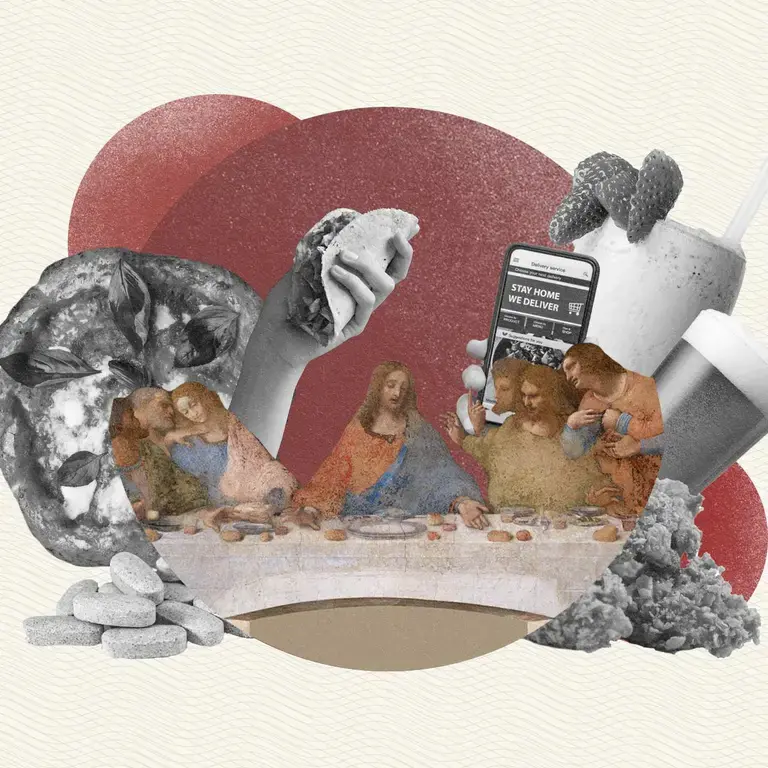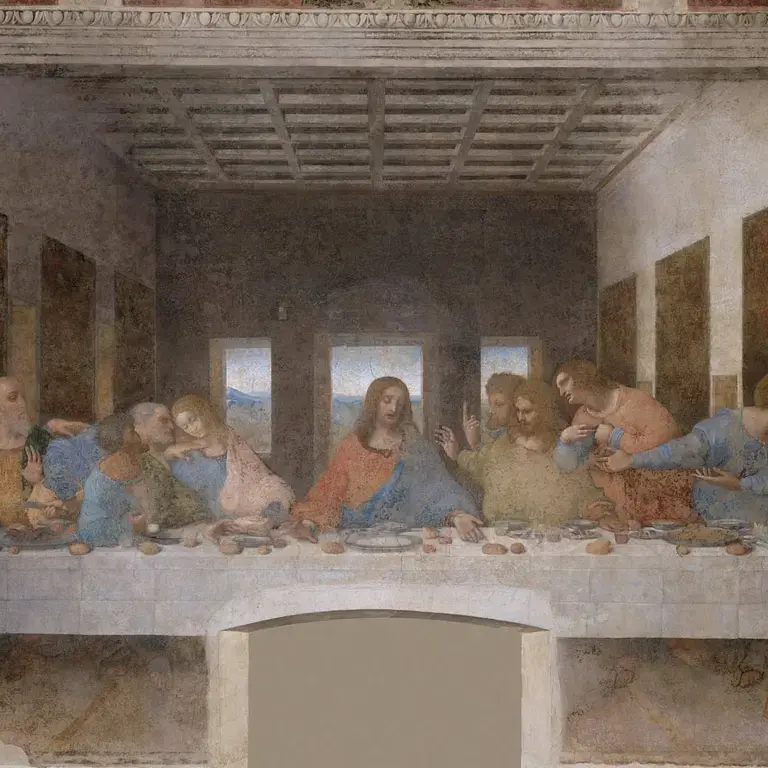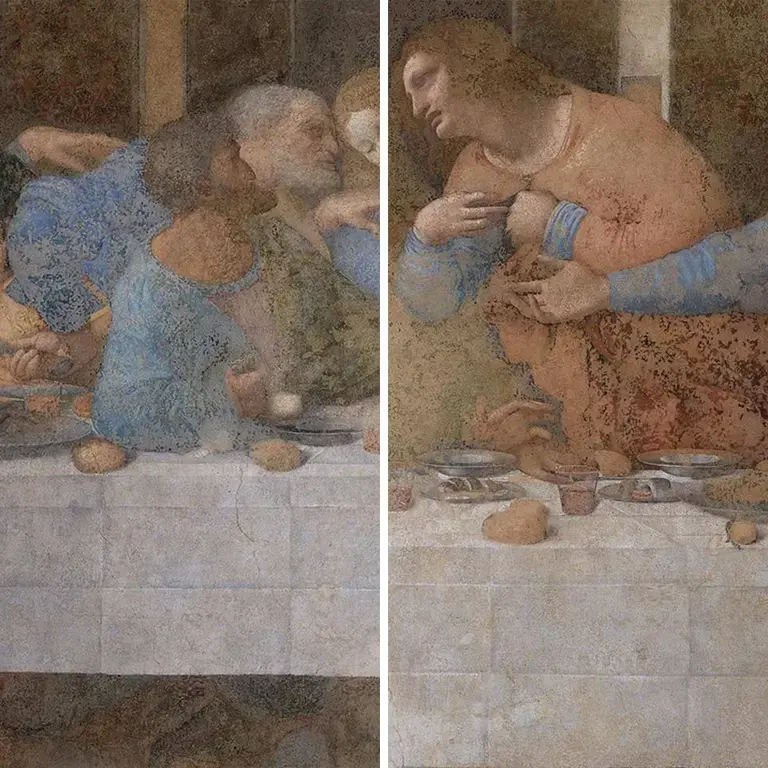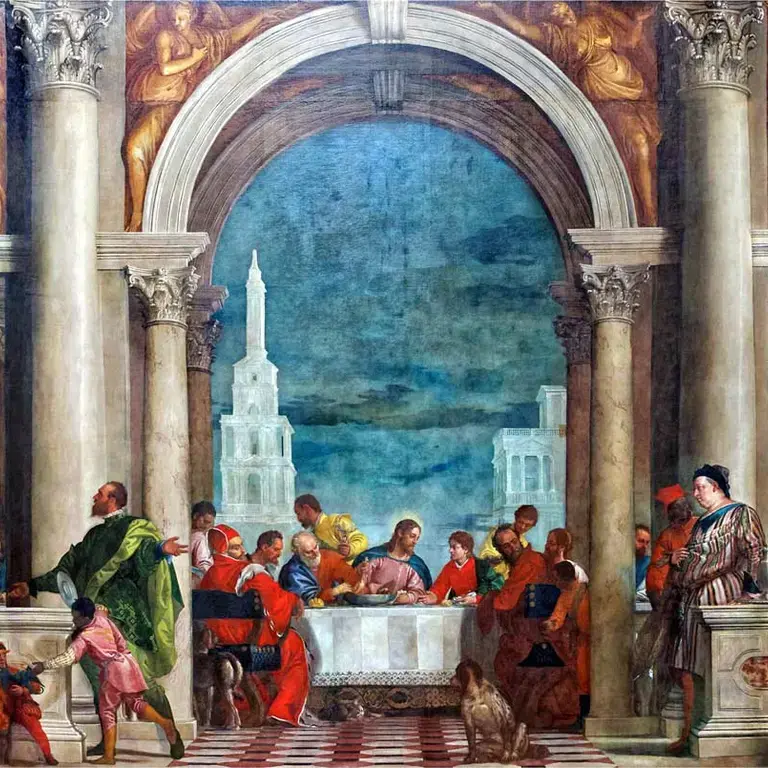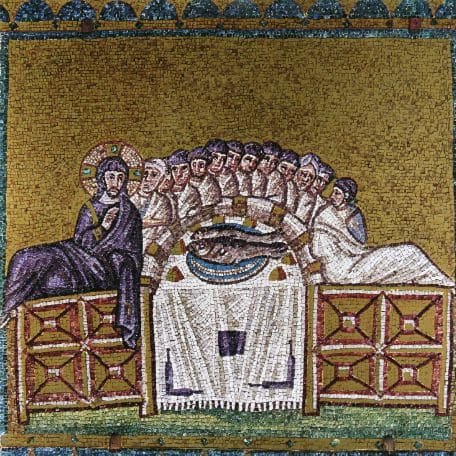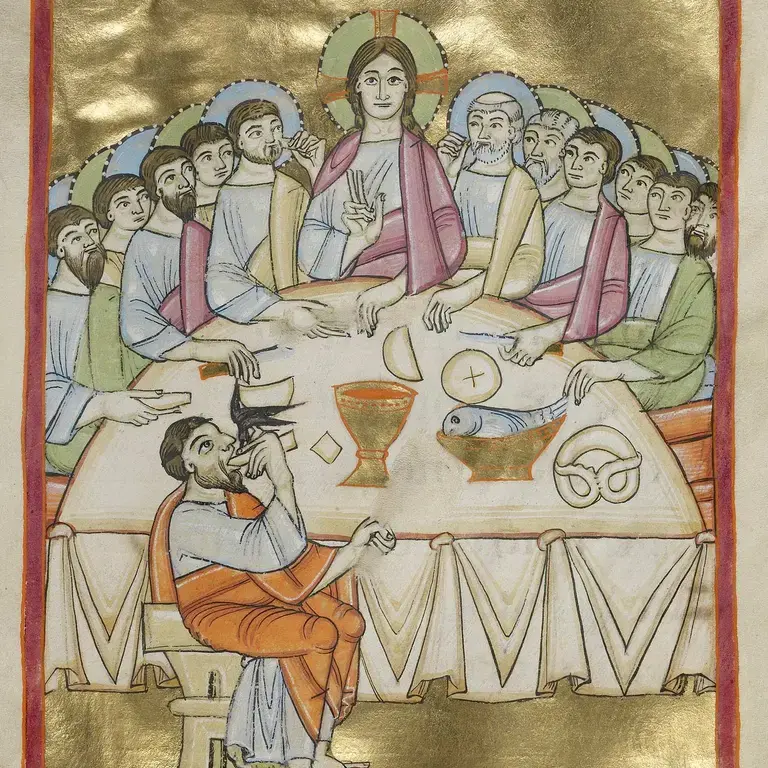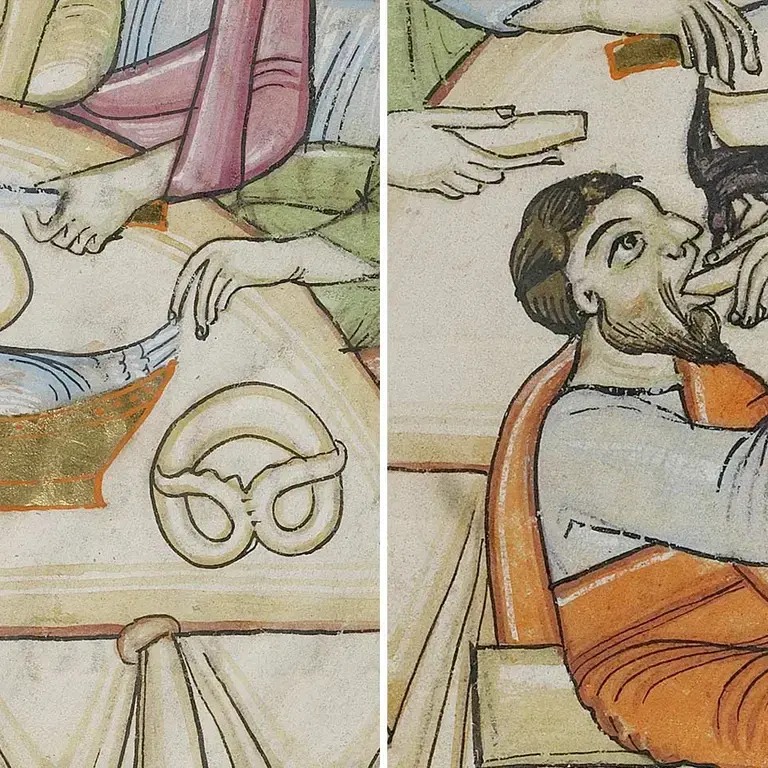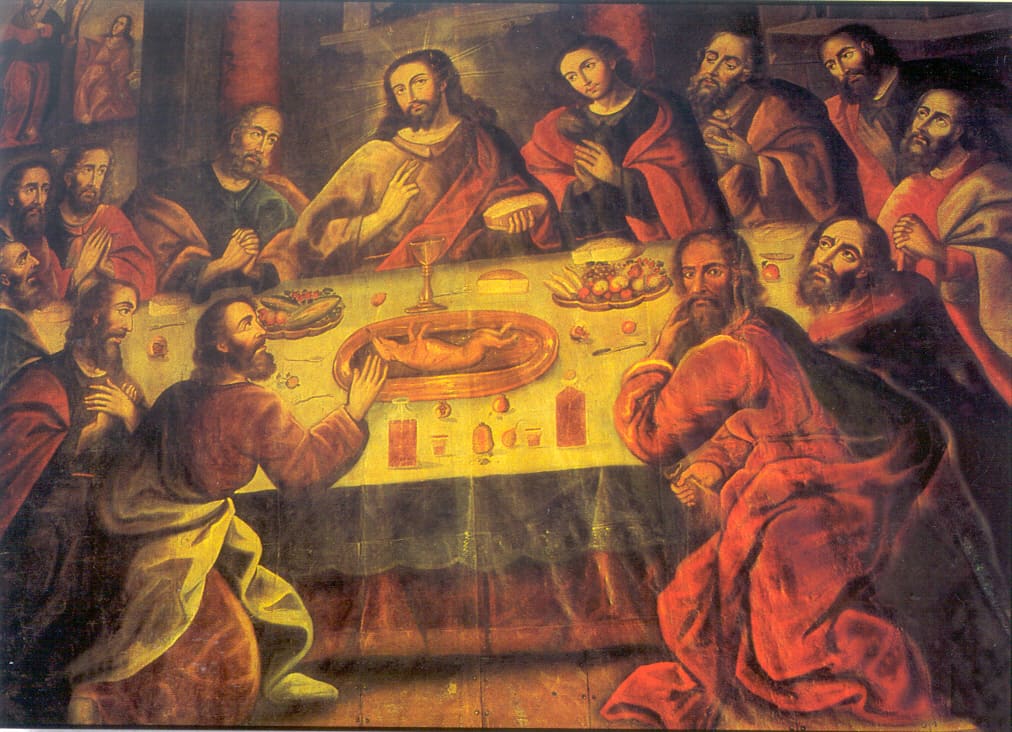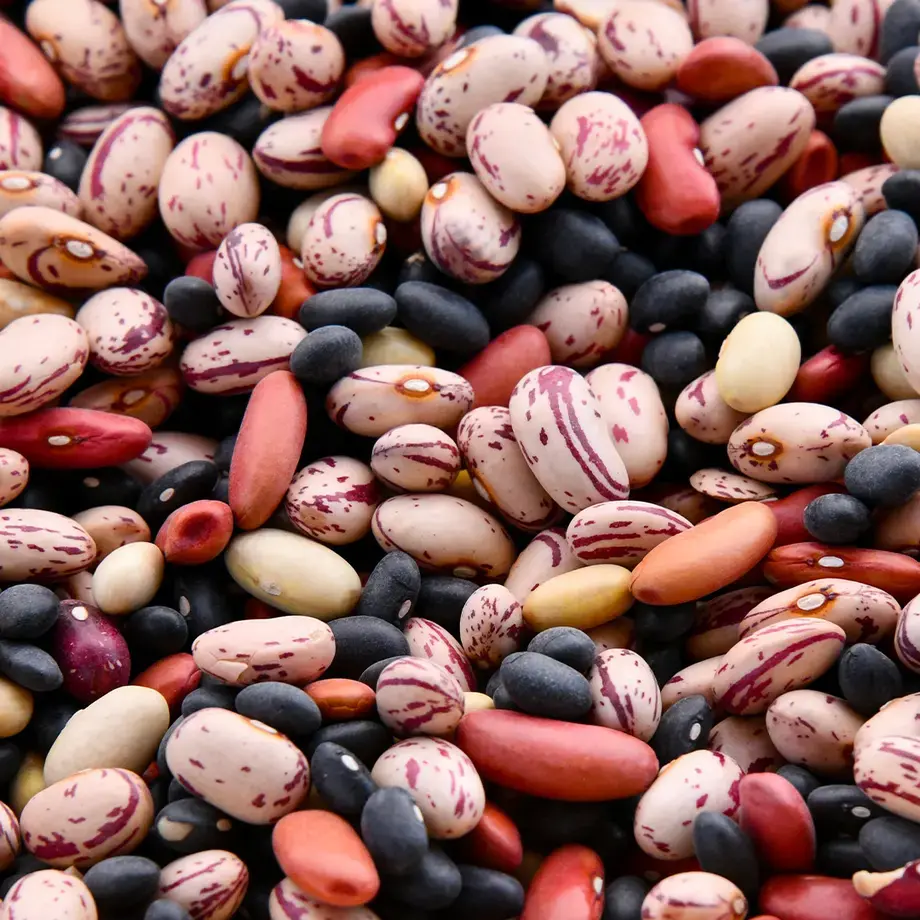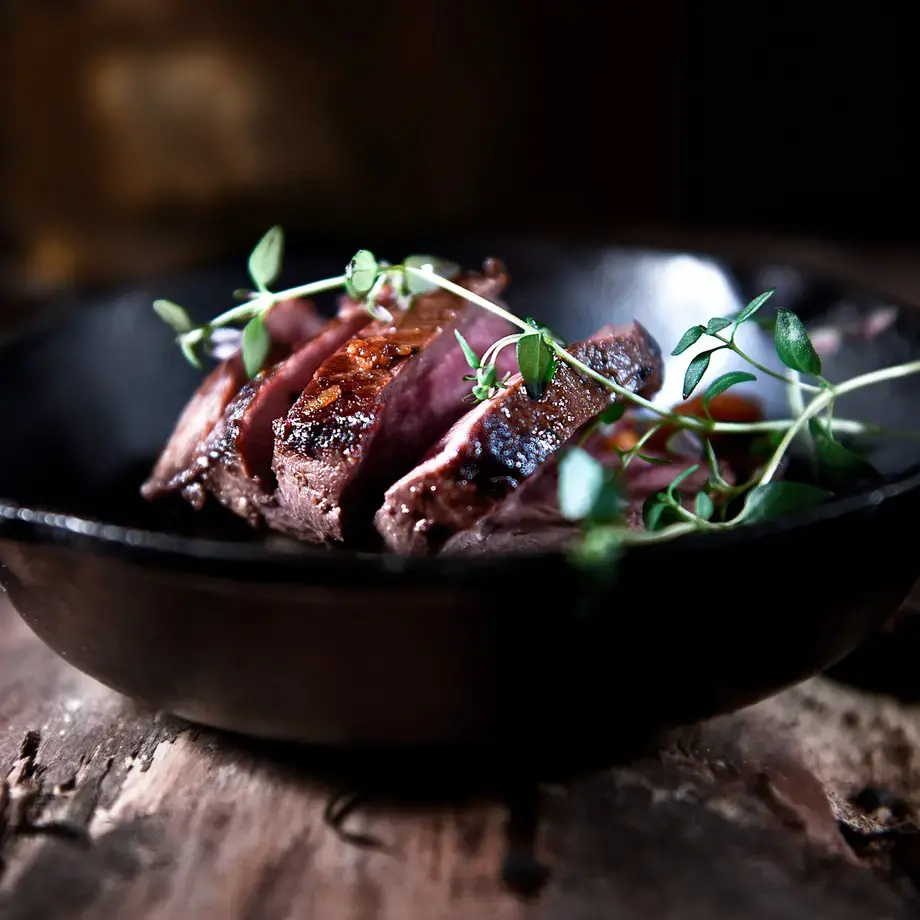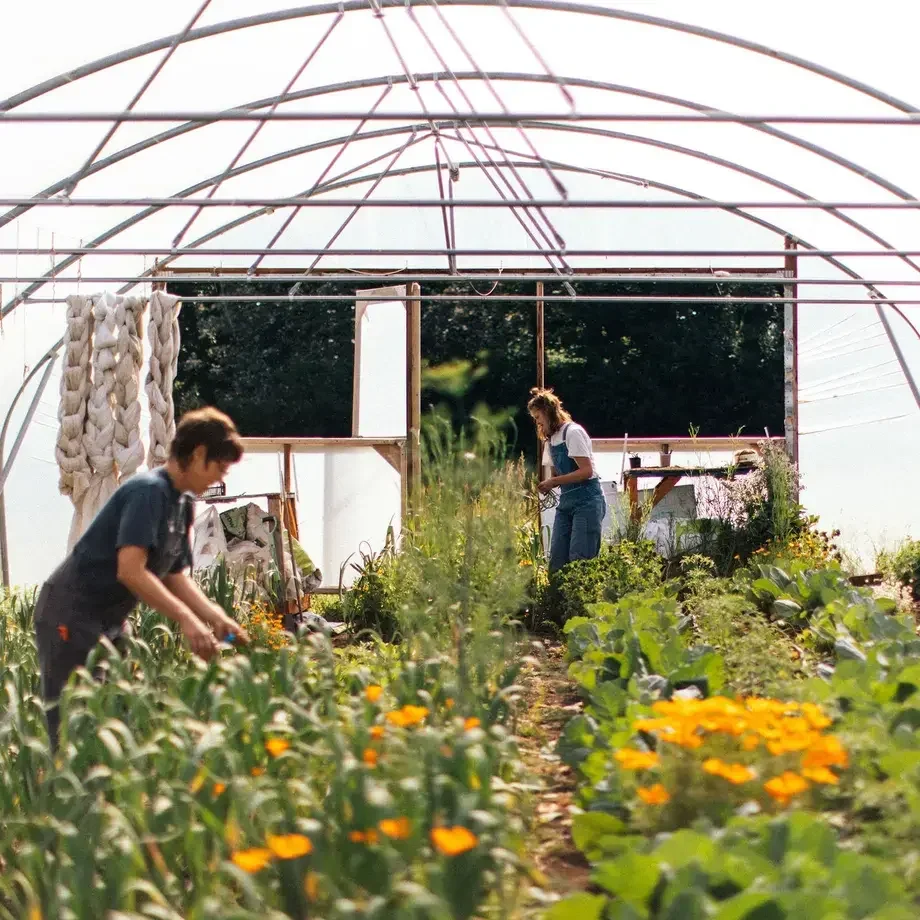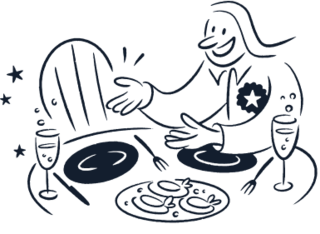The Last Supper is one of the most recognisable images in the world, and one of the most painted scenes in the history of art. Artists adapted faces, clothing, and settings to the places in which they lived and worked. And they put food on the table that was symbolic, recognisable, and acceptable for their audience. While wine and bread are the only sacramental necessities, some surprising foods ended up on the table around the world.
Undoubtedly, the most celebrated Last Supper painting is by Leonardo da Vinci. For the refectory of Santa Maria della Grazie in Milan, Leonardo painted a very realistic fresco with a table seen from a higher viewpoint than was typical of most Renaissance depictions of the subject. This allows more of the tabletop to be visible. On a well-ironed tablecloth we see bread, wine and plenty of fruit. A plate to our left contains about half a dozen whole fish. There is another plate on the right, which was illegible until a recent restoration. Researchers revealed the curious item on this plate: grilled eel garnished with orange slices. Eels could not have been served in the original supper, but they were a delicacy in Renaissance Italy, as mentioned in period cookbooks.
